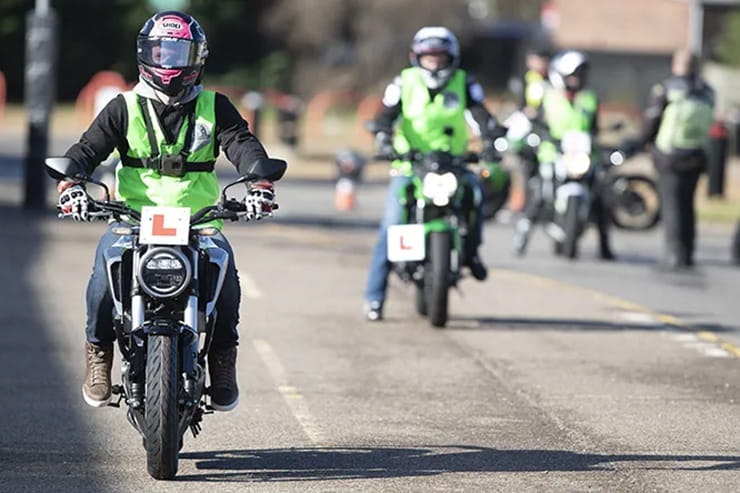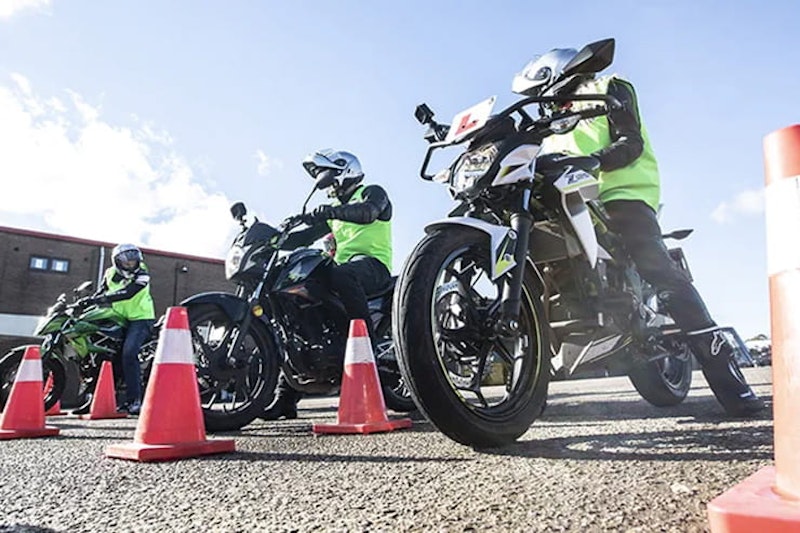Huge variation in motorcycle test pass rates around the UK
By Ben Purvis
Motorcycle Journalist
17.04.2024
Where you live could be the deciding factor on passing or failing your motorcycle test as the latest government data shows vastly different results in different parts of the country.
Figures covering the period from April 2023 to March 2024 reveal not only that pass rates vary wildly between different test centres, but also that there are big differences between male and female pass rates in some areas.
Nationally, the latest figures show that 73.2% of riders pass their ‘Module 1’ test – the off-road section that must be passed before moving on to the main ‘Module 2’ part – and that 71.1% of Module 2 tests are passed. However, even here there’s are some significant variations to be seen. For instance, there’s a big difference between Module 1 pass rates for male and female candidates, with 75.6% of male riders passing compared to just 55.6% of females. But in Module 2, that difference evaporates, with girls getting slightly the upper hand – with 71.2% passing against 71.1% of chaps.
Those numbers are fairly consistent with previous years, with data for the current test format that goes back to 2016-17, but it’s the second year running that a higher percentage of girls has passed Module 2 than boys, reversing the trend of the previous six years.
Percentages aside, the bare numbers still show that men are much more likely to take a bike test than women. There are around seven times as many men as women taking the Module 1 test, and the gap grows even more for Module 2, stretching the ratio to 10:1. That’s likely to reflect the relatively large percentage of female candidates that fail the Module 1 and don’t go on to take Module 2 at all.
Again, that’s a fairly constant trend over the years, although the ratio of men to women is gradually decreasing – back in 2016-17 the numbers taking Module 2 were nearly 12:1 in favour of males. Still a long way to go before there’s parity, but it’s heading in the right direction.
The really big differences start to emerge is when the figures are broken down to individual test centres, showing that where you take your test might have a noticeable impact on your chances of passing.
The fact that there’s just as much variance in the off-road Module 1 test pass rates from place to place as there is for the on-road Module 2 tests suggests that the differences can’t be down to something as simple as traffic, although it’s easy to imagine that it might be harder to pass an on-road test in a busy city than in a quiet, rural area.
Looking at Module 1, the lowest pass rate is at the Livingstone test centre near Edinburgh, where just 54.3% of candidates were successful in 2023/24, with 57.7% of male riders passing compared to just 31.8% of females. Scotland also has the centre with the highest Module 1 pass rate: Stornoway. Only a tiny number of new riders take their tests in the Outer Hebrides each year, but even so the pass rate of 86.4% is pretty impressive.
That can’t be put down purely to the small number of tests, as Norwich, with many times more tests per year, is next on the list with a Module 1 pass rate of 86.1%, and five of the ten busiest test centres in the country manage to beat the national average pass rate, exactly as it should be.
Top ten test centres for Module 1 pass rate:
Bottom ten test centres for Module 1 pass rate:
Moving across to the Module 2 test, the centre with the highest pass rate is Stoke-on-Trent, where a remarkable 90.4% of candidates ride away with a licence. Again, this is a relatively quiet test centre in terms of outright number of tests taken, but some much busier centres manage to come close on their pass rates. Ipswich, for instance, sees 87.3% of riders successfully through Module 2, and Burton on Trent – the sixth-busiest centre in the country on the number of Module 2 tests taken – manages 85.4%.
At the other end of the scale, the lowest percentage of Module 2 tests passed comes at the Newport (Gwent) centre, where only 56.8% of candidates are successful. What’s more, the same test centre bucks the trend that sees female Module 2 candidates nationally beating males, with just 45.9% of female tests resulting in a pass, compared to 57.9% of male ones.
Glasgow is next on the list, with a 56.8% pass rate, but here 60% of female candidates were successful compared to 56.6% of male ones.
Other areas that appear to be on the tougher end of the scale include Wrexham, Aylesbury, Hamilton and Chesterfield, all passing fewer than 60% of Module 2 candidates.
Top ten test centres for Module 2 pass rate:
Bottom ten test centres for Module 2 pass rate:
How many motorcycle licences are there?
After the CBT – which allows you to ride a scooter or motorcycle up to 50cc in capacity – there are four licences. In brief, here they are:
For a more detailed look at motorcycle licences, click here.
Each of these licences is obtained with a Module 1 certificate that’s earned in the test centre away from the road, and a Module 2 certificate, which is set on the road with an examiner following you with a radio link.
Motorbike Licences Explained - What motorcycle can I ride?
From CBT to A1 to A2 to A - do you know which licence you need to get into motorcycling?
Share on social media:

